Jinmiao Fu
Cost-Effective Hallucination Detection for LLMs
Jul 31, 2024



Abstract:Large language models (LLMs) can be prone to hallucinations - generating unreliable outputs that are unfaithful to their inputs, external facts or internally inconsistent. In this work, we address several challenges for post-hoc hallucination detection in production settings. Our pipeline for hallucination detection entails: first, producing a confidence score representing the likelihood that a generated answer is a hallucination; second, calibrating the score conditional on attributes of the inputs and candidate response; finally, performing detection by thresholding the calibrated score. We benchmark a variety of state-of-the-art scoring methods on different datasets, encompassing question answering, fact checking, and summarization tasks. We employ diverse LLMs to ensure a comprehensive assessment of performance. We show that calibrating individual scoring methods is critical for ensuring risk-aware downstream decision making. Based on findings that no individual score performs best in all situations, we propose a multi-scoring framework, which combines different scores and achieves top performance across all datasets. We further introduce cost-effective multi-scoring, which can match or even outperform more expensive detection methods, while significantly reducing computational overhead.
Q-Tuning: Queue-based Prompt Tuning for Lifelong Few-shot Language Learning
Apr 22, 2024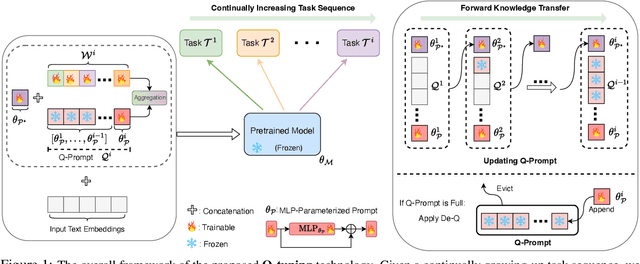
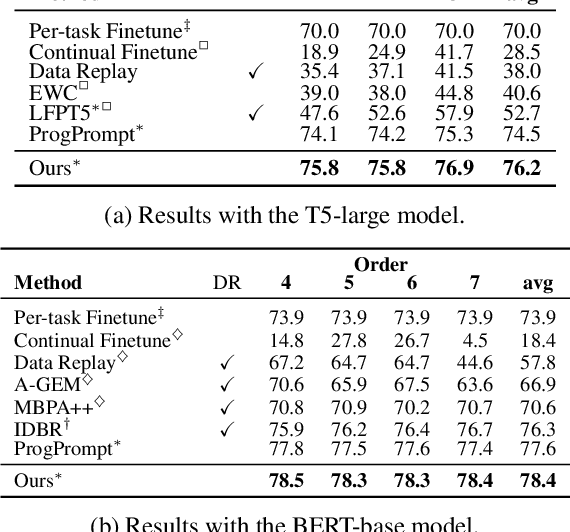
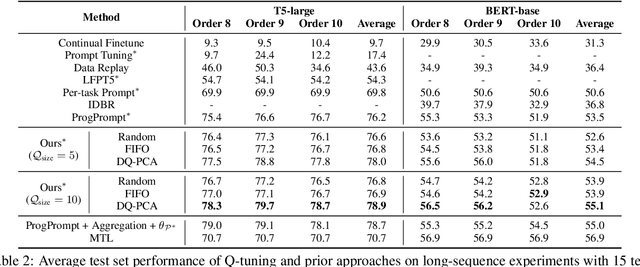
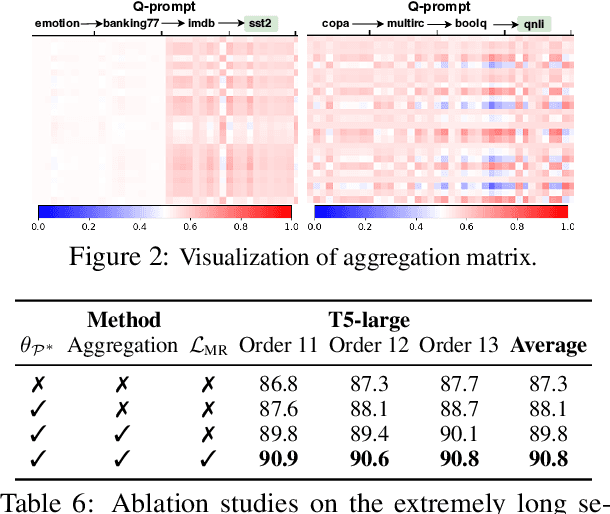
Abstract:This paper introduces \textbf{Q-tuning}, a novel approach for continual prompt tuning that enables the lifelong learning of a pre-trained language model. When learning a new task, Q-tuning trains a task-specific prompt by adding it to a prompt queue consisting of the prompts from older tasks. To better transfer the knowledge of old tasks, we design an adaptive knowledge aggregation technique that reweighs previous prompts in the queue with a learnable low-rank matrix. Once the prompt queue reaches its maximum capacity, we leverage a PCA-based eviction rule to reduce the queue's size, allowing the newly trained prompt to be added while preserving the primary knowledge of old tasks. In order to mitigate the accumulation of information loss caused by the eviction, we additionally propose a globally shared prefix prompt and a memory retention regularization based on information theory. Extensive experiments demonstrate that our approach outperforms the state-of-the-art methods substantially on continual prompt tuning benchmarks. Moreover, our approach enables lifelong learning on linearly growing task sequences while requiring constant complexity for training and inference.
Hierarchical Conditional Semi-Paired Image-to-Image Translation For Multi-Task Image Defect Correction On Shopping Websites
Sep 12, 2023Abstract:On shopping websites, product images of low quality negatively affect customer experience. Although there are plenty of work in detecting images with different defects, few efforts have been dedicated to correct those defects at scale. A major challenge is that there are thousands of product types and each has specific defects, therefore building defect specific models is unscalable. In this paper, we propose a unified Image-to-Image (I2I) translation model to correct multiple defects across different product types. Our model leverages an attention mechanism to hierarchically incorporate high-level defect groups and specific defect types to guide the network to focus on defect-related image regions. Evaluated on eight public datasets, our model reduces the Frechet Inception Distance (FID) by 24.6% in average compared with MoNCE, the state-of-the-art I2I method. Unlike public data, another practical challenge on shopping websites is that some paired images are of low quality. Therefore we design our model to be semi-paired by combining the L1 loss of paired data with the cycle loss of unpaired data. Tested on a shopping website dataset to correct three image defects, our model reduces (FID) by 63.2% in average compared with WS-I2I, the state-of-the art semi-paired I2I method.
KD-FixMatch: Knowledge Distillation Siamese Neural Networks
Sep 11, 2023
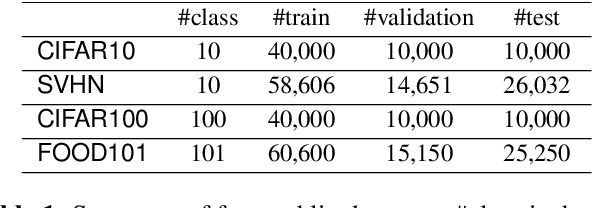

Abstract:Semi-supervised learning (SSL) has become a crucial approach in deep learning as a way to address the challenge of limited labeled data. The success of deep neural networks heavily relies on the availability of large-scale high-quality labeled data. However, the process of data labeling is time-consuming and unscalable, leading to shortages in labeled data. SSL aims to tackle this problem by leveraging additional unlabeled data in the training process. One of the popular SSL algorithms, FixMatch, trains identical weight-sharing teacher and student networks simultaneously using a siamese neural network (SNN). However, it is prone to performance degradation when the pseudo labels are heavily noisy in the early training stage. We present KD-FixMatch, a novel SSL algorithm that addresses the limitations of FixMatch by incorporating knowledge distillation. The algorithm utilizes a combination of sequential and simultaneous training of SNNs to enhance performance and reduce performance degradation. Firstly, an outer SNN is trained using labeled and unlabeled data. After that, the network of the well-trained outer SNN generates pseudo labels for the unlabeled data, from which a subset of unlabeled data with trusted pseudo labels is then carefully created through high-confidence sampling and deep embedding clustering. Finally, an inner SNN is trained with the labeled data, the unlabeled data, and the subset of unlabeled data with trusted pseudo labels. Experiments on four public data sets demonstrate that KD-FixMatch outperforms FixMatch in all cases. Our results indicate that KD-FixMatch has a better training starting point that leads to improved model performance compared to FixMatch.
AdaSelection: Accelerating Deep Learning Training through Data Subsampling
Jun 19, 2023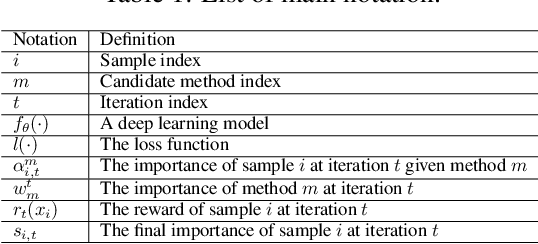
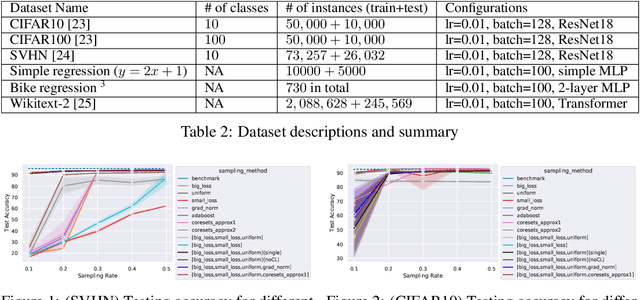
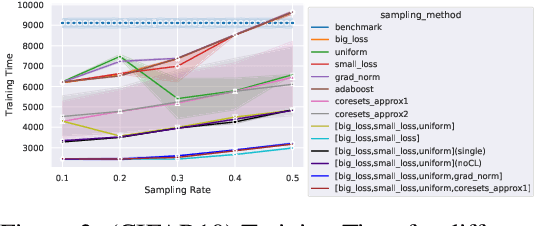

Abstract:In this paper, we introduce AdaSelection, an adaptive sub-sampling method to identify the most informative sub-samples within each minibatch to speed up the training of large-scale deep learning models without sacrificing model performance. Our method is able to flexibly combines an arbitrary number of baseline sub-sampling methods incorporating the method-level importance and intra-method sample-level importance at each iteration. The standard practice of ad-hoc sampling often leads to continuous training with vast amounts of data from production environments. To improve the selection of data instances during forward and backward passes, we propose recording a constant amount of information per instance from these passes. We demonstrate the effectiveness of our method by testing it across various types of inputs and tasks, including the classification tasks on both image and language datasets, as well as regression tasks. Compared with industry-standard baselines, AdaSelection consistently displays superior performance.
Text Is All You Need: Learning Language Representations for Sequential Recommendation
May 23, 2023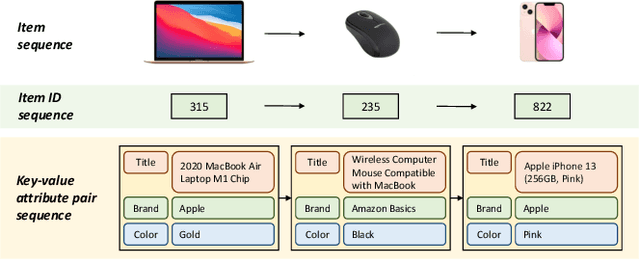
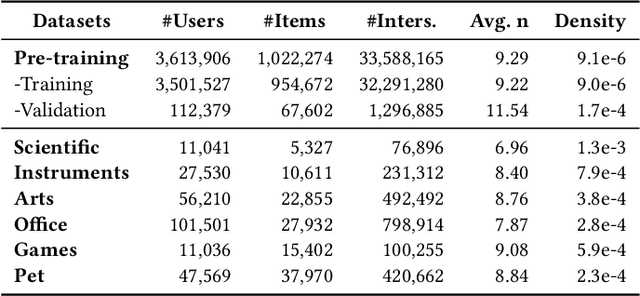

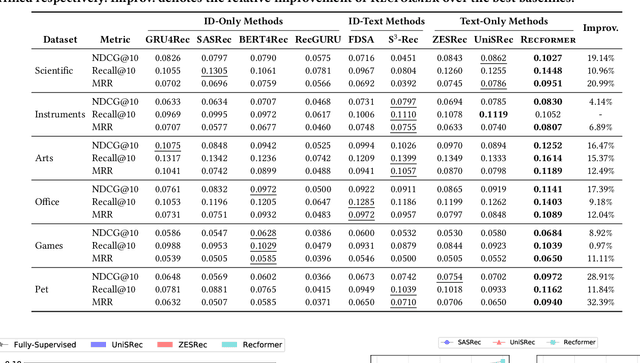
Abstract:Sequential recommendation aims to model dynamic user behavior from historical interactions. Existing methods rely on either explicit item IDs or general textual features for sequence modeling to understand user preferences. While promising, these approaches still struggle to model cold-start items or transfer knowledge to new datasets. In this paper, we propose to model user preferences and item features as language representations that can be generalized to new items and datasets. To this end, we present a novel framework, named Recformer, which effectively learns language representations for sequential recommendation. Specifically, we propose to formulate an item as a "sentence" (word sequence) by flattening item key-value attributes described by text so that an item sequence for a user becomes a sequence of sentences. For recommendation, Recformer is trained to understand the "sentence" sequence and retrieve the next "sentence". To encode item sequences, we design a bi-directional Transformer similar to the model Longformer but with different embedding layers for sequential recommendation. For effective representation learning, we propose novel pretraining and finetuning methods which combine language understanding and recommendation tasks. Therefore, Recformer can effectively recommend the next item based on language representations. Extensive experiments conducted on six datasets demonstrate the effectiveness of Recformer for sequential recommendation, especially in low-resource and cold-start settings.
CMA-CLIP: Cross-Modality Attention CLIP for Image-Text Classification
Dec 09, 2021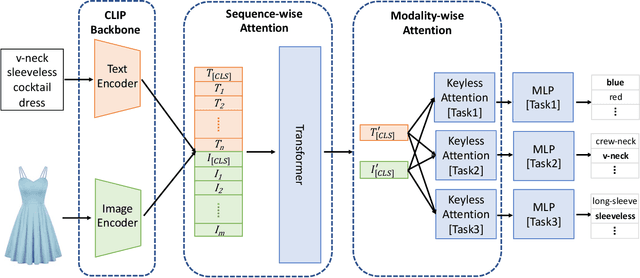
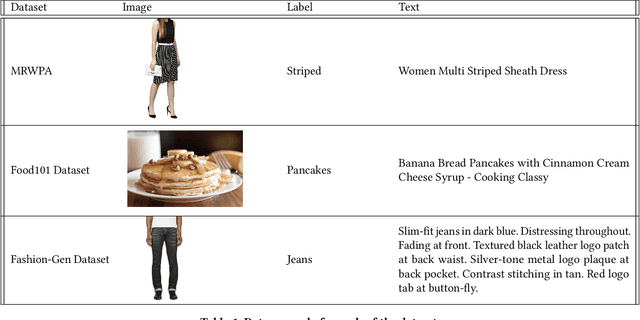

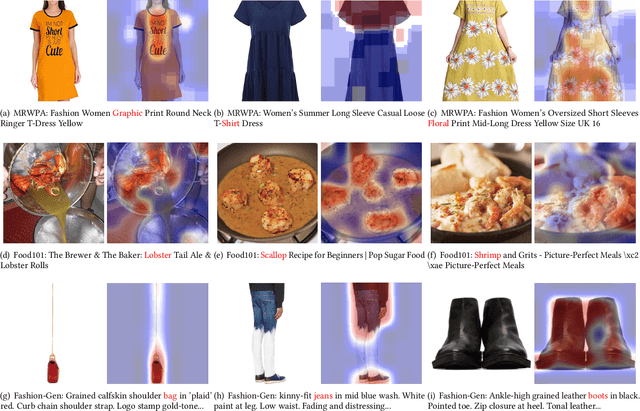
Abstract:Modern Web systems such as social media and e-commerce contain rich contents expressed in images and text. Leveraging information from multi-modalities can improve the performance of machine learning tasks such as classification and recommendation. In this paper, we propose the Cross-Modality Attention Contrastive Language-Image Pre-training (CMA-CLIP), a new framework which unifies two types of cross-modality attentions, sequence-wise attention and modality-wise attention, to effectively fuse information from image and text pairs. The sequence-wise attention enables the framework to capture the fine-grained relationship between image patches and text tokens, while the modality-wise attention weighs each modality by its relevance to the downstream tasks. In addition, by adding task specific modality-wise attentions and multilayer perceptrons, our proposed framework is capable of performing multi-task classification with multi-modalities. We conduct experiments on a Major Retail Website Product Attribute (MRWPA) dataset and two public datasets, Food101 and Fashion-Gen. The results show that CMA-CLIP outperforms the pre-trained and fine-tuned CLIP by an average of 11.9% in recall at the same level of precision on the MRWPA dataset for multi-task classification. It also surpasses the state-of-the-art method on Fashion-Gen Dataset by 5.5% in accuracy and achieves competitive performance on Food101 Dataset. Through detailed ablation studies, we further demonstrate the effectiveness of both cross-modality attention modules and our method's robustness against noise in image and text inputs, which is a common challenge in practice.
 Add to Chrome
Add to Chrome Add to Firefox
Add to Firefox Add to Edge
Add to Edge